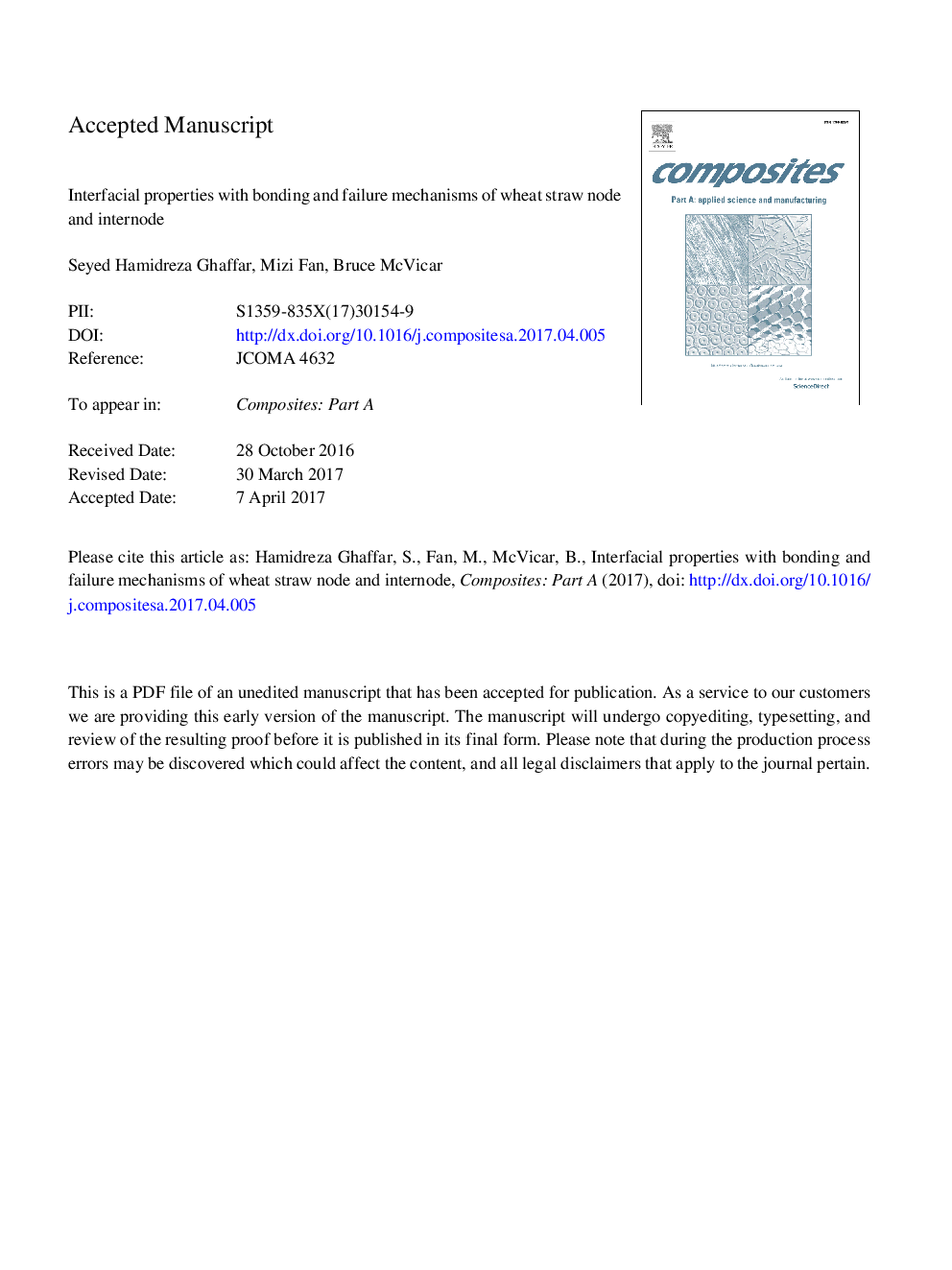| Article ID | Journal | Published Year | Pages | File Type |
|---|---|---|---|---|
| 5439564 | Composites Part A: Applied Science and Manufacturing | 2017 | 24 Pages |
Abstract
The interfacial properties with bonding and failure mechanisms of different anatomical sections of wheat straw stem, namely node and internode, inner and outer surface, with various resins are investigated. An environmentally friendly pre-treatment was employed which led to an improved interface between resins and the micro porous surface of straw. The results showed that chemical functionalities of various surface profiles altered the bonding performance, i.e. extractive, aliphatic fraction of waxes, and silica concentrated on the outer surface, inhibited the bonding quality and the establishment of robust interface. The pre-treatment however, could significantly (PÂ <Â 0.05): (i) modify the surface of straw with the partial removal of extractives, waxes, and silica which made it more hydrophilic and more compatible with water based resins, (ii) cause the microcellular structure of straw to expand and hence inspire the mechanical entanglement on a micro level upon resin solidification and, (iii) increase the tensile strength of node and internode by modifying the cellulose crystallinity. The combined effects of resin, straw and interface led to hierarchical damage process, which could be modelled into four main failure mechanisms representing strong to weak bonding quality.
Related Topics
Physical Sciences and Engineering
Materials Science
Ceramics and Composites
Authors
Seyed Hamidreza Ghaffar, Mizi Fan, Bruce McVicar,
